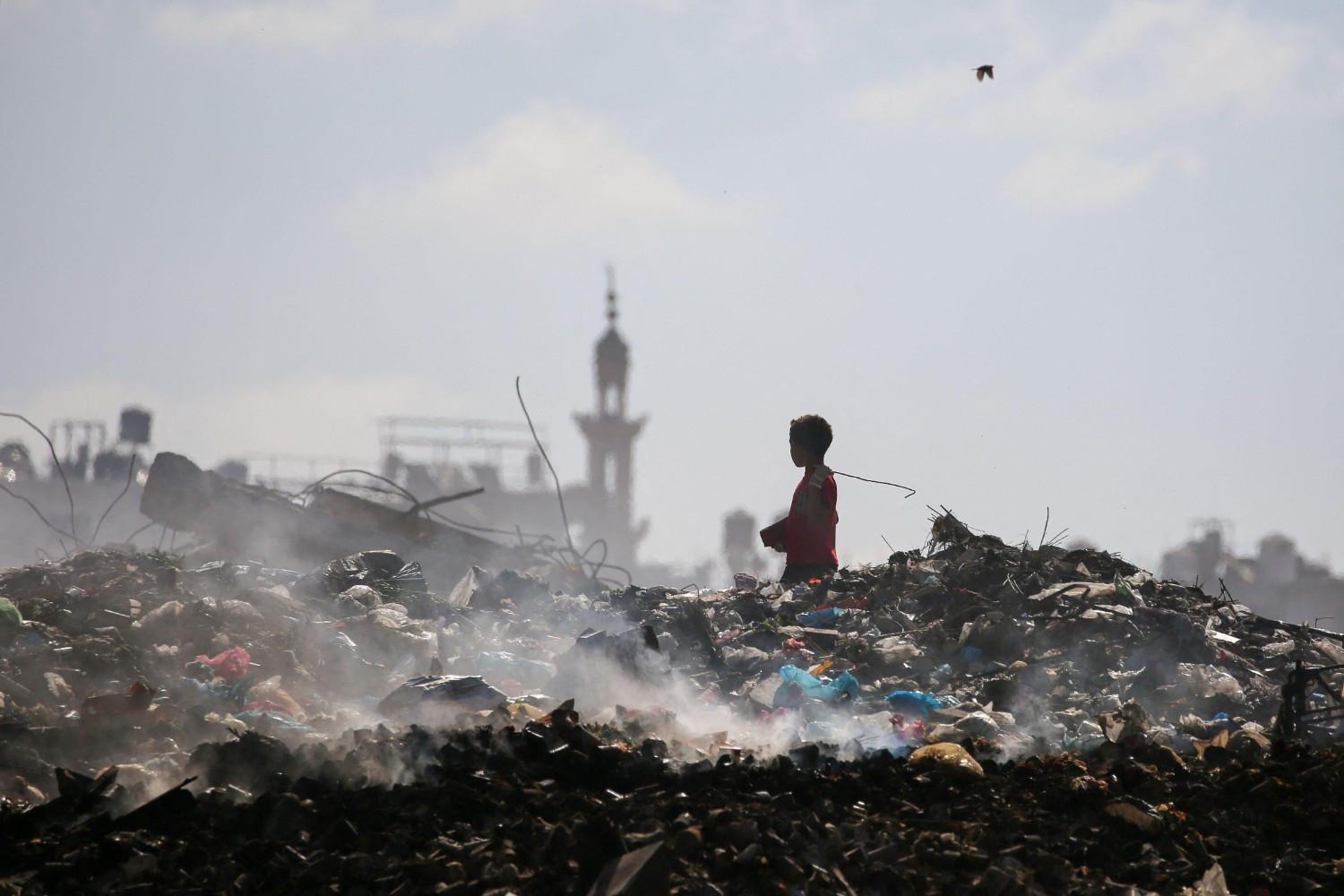
A Palestinian boy searches for things to rescue at a garbage waste dump in the Al-Bureij camp in the central Gaza Strip on July 7, 2025.
Israeli Prime Minister Benjamin Netanyahu has given orders to the military to establish a so-called "humanitarian aid city" in the southern Gaza Strip town of Rafah, even if a new ceasefire agreement is reached, Israeli media reported.
During a security cabinet meeting, Netanyahu insisted that the forced displacement of Palestinians to southern Gaza must continue, arguing that large tent camps could be set up there to sever connections between the local population and Hamas.
The order sparked heated debates within Israel’s security cabinet, especially between Finance Minister Bezalel Smotrich and army chief Eyal Zamir who opposed the plan. Smotrich suggested subjecting Zamir to a "lie detector test."
Meanwhile, Investigations by the Financial Times revealed that Boston Consulting Group (BCG), a Washington-based consultancy, modeled plans to forcibly relocate Gazans as part of the Gaza Humanitarian Foundation (GHF), an Israel-U.S.-backed aid coordination initiative intended to replace U.N.-led mechanisms.
Over seven months, more than a dozen BCG employees worked on this project under contracts exceeding $4 million.
According to the investigation, one scenario in BCG’s financial model envisioned convincing over 500,000 Gazans to leave the area in exchange for relocation packages worth $9,000 per person, with an expectation that three-quarters of them would not return.
BCG announced the termination of its collaboration and the suspension of aid operations in the region on May 30.
A Washington Post special report also revealed that the aid distribution system organized by the U.S.-supported foundation led to civilian deaths due to poor planning and proximity to military zones.
Hundreds of Palestinians were killed after the Israeli army opened fire on crowds gathered for aid distribution in the nearly daily incident.
The most striking part of the report highlighted that over 400 people were killed in just the first week after Israeli forces opened fire on starving civilians waiting in line for aid, simply because they deviated slightly from designated routes.
Hamas lost control over most of Gaza: Official
Report came as Hamas and Israel were resuming talks in Qatar on July 7, with Pri Netanyahu traveled to Washington to meet U.S. President Donald Trump, who has pushed for a "deal this week" between the foes.
However, a senior Hamas security official told the BBC that the Palestinian group has lost approximately 80 percent of its control over the Gaza Strip, with armed clans now filling the power vacuum.
“Let's be realistic here - there's barely anything left of the security structure. Most of the leadership, about 95 percent, are now dead... The active figures have all been killed," he said.
"So really, what's stopping Israel from continuing this war?"
"Logically, it has to continue until the end. All the conditions are aligned: Israel has the upper hand, the world is silent, the Arab regimes are silent, criminal gangs are everywhere, society is collapsing."
He added that people have ransacked the powerful Hamas security headquarters, Ansar, which was central to their governance in Gaza. "They looted everything — from offices to mattresses and even zinc sheets — and no one intervened. There was no police presence, no security at all."